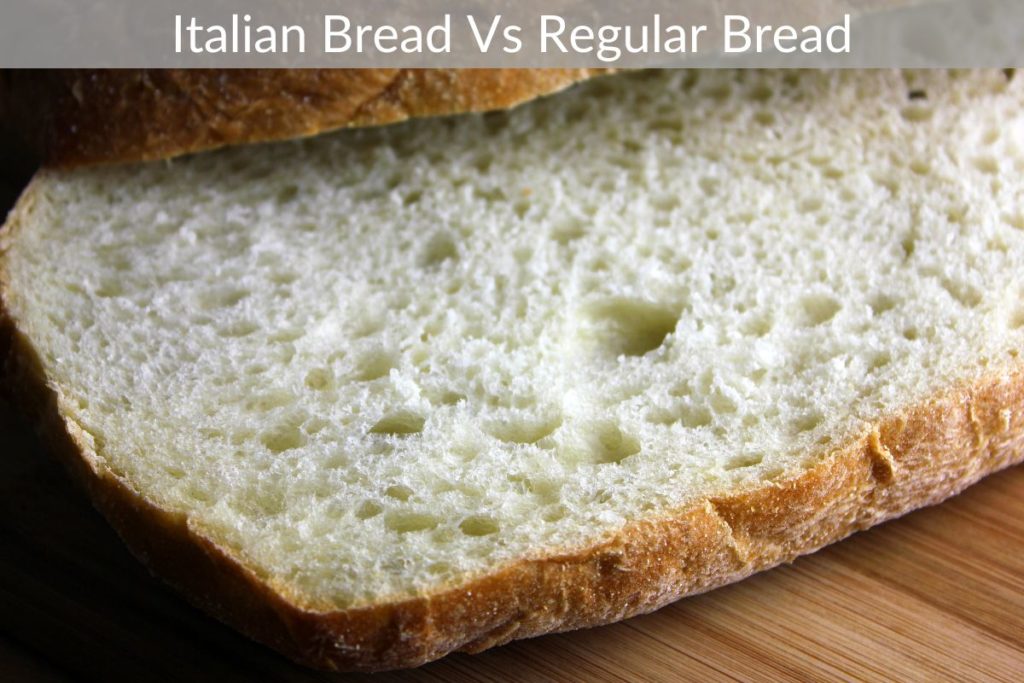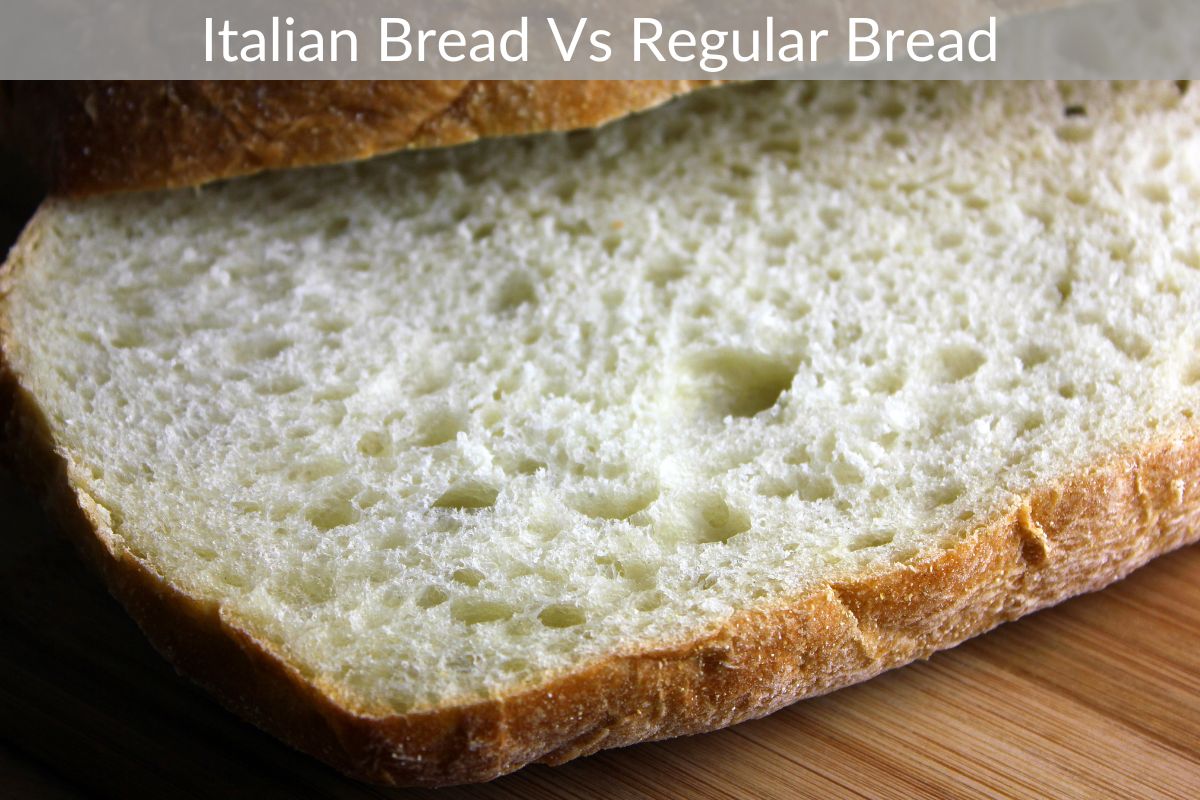There are many benefits of Italian bread, including its neutral taste. This bread is great for sandwiches of all kinds, and it doesn’t interfere with the fillings inside. Its soft texture and slight flakiness make it a good choice for sandwiches.
If you’re wondering what the difference is between Italian bread and regular bread, read on. This article will give you an overview of the two types of bread.
Depending on your personal preferences, you may even want to try both.

French bread is Italian bread
The ingredients used in French and Italian breads are quite similar, but the preparation differs. French baguettes are made with only water, flour, salt, and yeast, while Italian breads are usually sweeter and contain additional ingredients such as olive oil and sugar. The French version is slightly softer and more chewy, while Italian breads are more dense and crumbly. Both varieties are incredibly popular around the world. If you’re wondering which to try first, here are some of the main differences between Italian and French breads.
Baguette is the most popular French bread, and is served in nearly every province. Couronne is a ring-shaped bread, while “country bread” is a loaf of bread made from whole wheat or rye flour. For the French, bread is an important part of life, and they don’t just eat it on special occasions. It’s also common to eat it with coffee or a snack.
The shape and size of the bread can also attract your attention. French bread is generally long, thin, and round, while Italian bread is flat and wide. The breads of France and Italy differ by significant amounts. For example, the French bread, known as a baguette, is the national symbol, and is 30 inches in diameter. While the Italian bread, called focaccia, is round and flat, it has a similar texture to the French bun.
Baguettes are baked in steam injection ovens
When making baguettes, a simple home oven recipe should be used. A basic baguette recipe should be mixed overnight and then kneaded just until the dough is smooth and well-mixed. Many people disagree on whether to add yeast before the autolyze process or after. Either way, the final dough temperature should be around 70 degrees. Baguettes can be made with any type of yeast, but most are made with rapid rise yeast.
The purpose of injecting steam into the oven at the start of the baking process is two-fold. First, it slows down the setting of the crust, giving the bread a springy texture while baking. It also produces a thin, crispy crust. The crust of breads baked without steam tends to be dense and chewy. The amount of steam you inject depends on the desired texture of your bread.
The steam injection ovens are designed with low individual decks. The low decks keep the steam on the loaf’s surface. The first step is loading the loaf onto the preheated stone and placing a bowl over it. The second step is to fill the bowl with 250 mL of water. Once the water has cooled, the temperature of the oven is reduced to 480 degrees. Baguettes baked in a steam injection oven can be up to 20 inches in length.
Ciabatta is a sandwich bread
If you’ve never had a ciabatta sandwich before, you should try it. It’s a soft and airy bread with honeycomb-like holes. You can dip it into a sauce or soup. You can also use it as a sandwich bread and fill it with cured meat or cheese. The bread also tastes great when served with extra-virgin olive oil and balsamic vinegar.
When making a ciabatta sandwich, choose the filling and bread quality wisely. A sandwich is nothing without a good filling and good bread. Ciabatta is a fantastic choice for a hearty sandwich, with a delicate flavor and wonderful texture. You can also use it as a burger bun. Here are some ideas for sandwiches with ciabatta bread:
To make ciabatta, place the dough in a large floured work surface. Pull it towards the center to form a large, flat square. Split the dough in half and roll out the halves in four folds. To prevent the dough from sticking to the surface, use a bench scraper to remove any remaining bits. Once the dough is ready, transfer it to a lightly greased baking sheet. Let it rise for about 45 minutes, then cut and serve!
Panettone is a Christmas bread
Traditionally baked at Christmas, panettone is a traditional Italian holiday bread. The basic recipe is the same, but the method may vary slightly. To start making panettone, mix the yeast with the milk. Next, froth the milk, and mix in the remaining wet ingredients. Once the dough has doubled in size, place it in the baking tin. Bake for about 40 to 45 minutes, until the top is golden brown. Let cool completely before slicing it.
While it may sound simple enough, baking panettone is a very difficult art form, and it’s highly unlikely that anyone will be able to perfect the recipe on their own. A panettone dough needs to rise for about 30 hours, making the process time long. The final product is beautiful and festive-looking, packaged in a festive box and ribbon. In Italy, it’s customary to gift a panettone to the host of a gathering.
Although this traditional bread is eaten at Christmas, it can be baked all year round. Panettone can be baked with a stand mixer or a large bowl and wooden spoon. Once the dough is prepared, cover it with plastic wrap and let it rise at room temperature for one hour. Then slice it and serve to your family! It’s great for Christmas entertaining or as a show-stopping dessert! But make sure to use high quality ingredients, and enjoy the festive season.
Focaccia is a sandwich bread
Focaccia is a type of Italian sandwich bread. It is a flatbread that is often sliced into two halves and spread with mayonnaise, basil pesto, or both. Next, layer a thin layer of turkey, then add a few slices of cheese, tomatoes, and spinach. Finally, top with another layer of turkey. Wrap the sandwich tightly in plastic wrap, foil, or both, and chill until serving.
You can freeze a portion of the dough and then thaw it overnight in the refrigerator. You can also freeze it for up to three months. When reheating, place the dough on a baking sheet, which has been sprayed with olive oil. Once thawed, the focaccia can be baked for about 10 minutes, or until the internal temperature reaches 200 degrees Fahrenheit.
Focaccia is also a great accompaniment to pasta. Not only does it make a great sandwich, but it is also a great appetizer. You can make your own focaccia bread at home, too. All you need is water, sugar, and yeast, then let it stand for about 5-10 minutes until the yeast starts to foam. Afterward, you can use it as a sandwich bread.
Buccellato di Lucca is a special Italian bread
Buccellato di Lucca is incredibly delicious and a staple of any Italian meal. Its dark brown color and shiny glaze give it a sweet, sticky flavor. The inside is soft and filled with raisins and aniseed. It can be a sweet treat eaten as is or toasted with butter. This bread is a local specialty that originated in Lucca. A delicious treat from this region of Tuscany, it’s one of Italy’s best known breads.
The name “Buccellato” comes from the Latin word Bucella, which means crown. Buccellato di Lucca is a delicious, ancient bread that is made in ring and loaf forms. It is sweet, and is not as sweet as other Italian sweet breads. Traditionally, this bread was made for children’s confirmation, but nowadays, this bread is an everyday staple in Lucca.
To make this delicious Italian bread, you must prepare the dough. First, make the dough soft and elastic. Then, add a tablespoon of sugar and a pinch of salt. Next, add raisins. After adding raisins, sprinkle with flour and mix well. After this, roll the dough into a log. Place the dough on a lightly greased baking tray. Allow it to prove for 15 minutes before baking. Preheat the oven to 200 degC.
Panettone has vanilla icing
The classic flavor of Panettone is derived from the Sicilian Fiori di Sicilia essence, which is available at King Arthur Flour. It is a blend of vanilla and citrus that gives the bread its classic flavor. Alternatively, you can use vanilla extract or orange zest. If you’re pressed for time, you can also knead the dough without a mixer, but this is an arm workout!
The next step in making Panettone is to make the icing. It should contain sugar, vanilla bean paste, heavy cream, orange zest, and butter. The icing should be light and spreadable. Using a skewer, insert the skewer in the center to test the bread pudding. Bake until the skewer comes out clean. Remove from the oven and serve with ice cream, whipped cream, or stewed winter fruit.
After making the dough, it should be refrigerated or frozen in a loaf or slice. To store leftover Panettone, wrap tightly in plastic wrap and place in a freezer-safe bag. It will stay fresh in this way for up to five days. For more convenience, you can also bake the dough into a loaf and freeze it in individual portions. The individual panettone wrappers make serving and storing the dough easy.

